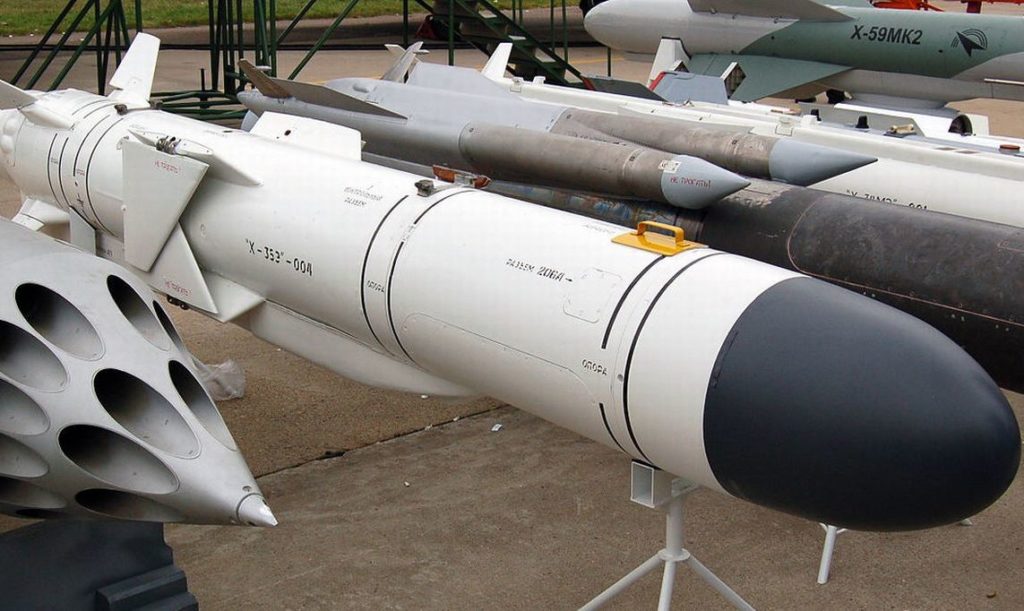Written by Andrei Akulov; Originally appeared on strategic-culture.org
According to Russian media reports, the new Kh-35U, the most recent variant of the Kh-35 anti-ship missile, was successfully test-fired in late September at a naval test range belonging to the Pacific Fleet. A formation of eight unmanned vessels was the target used during the training. The launching platform was the Su-34 long-range strike plane. According to the Defense Ministry, “all in all, eight launches were carried out, and all the missiles successfully hit their targets.”
Developed by Russia’s Tactical Missiles Corporation, the Kh-35U is a unified, subsonic, sea-skimming, anti-ship cruise missile that consists of its body, an active radar seeker, a high-explosive fragmentation penetrator warhead, an independent self-destruct system, an inertial navigation system, a radio altimeter, an air intake, a fuel system, a sustainer turbofan, and a solid-state rocket booster. With a range of 260 km (144 mi), it can take out surface ships with a displacement of 5,000 tons. It should be noted that its specs are superior to those of the US air-launched Naval Strike Missile, which has a range of only 100 nautical miles.
Its minimum range is 7 km, speed: Mach 0.8–Mach 0.95 (609–723 mph; 980–1,164 km/h), and flight altitude: 10-15 m en route and roughly 3 m in its terminal stage. Its warhead includes a 145 kg HE fragmentation shaped charge designed to pierce horizontally through bulkheads and compartments prior to exploding inside a ship. The warhead’s small diameter — 45.0 cm — allows it to be fitted on various means of delivery.
Weighing 550 kg, the Kh-35U can be installed on a variety of platforms, such as helicopters, surface ships, and coastal defense batteries. At present, it can be carried by several types of surface combatants, the Su-24M, Su-30SM, MiG-29K/KUB, Su-35S, and Tu-142 combat aircraft, and the Ka-52K helicopters. The decision to introduce the Kh-35U to the armament suite of the Su-35S (a 4++ generation, advanced capability, multirole air superiority fighter that has become the backbone of the Russian Aerospace Forces) was made in early September. It has also been integrated into the Bal coastal-defense missile system. The Kh-35U can attack land targets, including heavily fortified enemy positions, warehouses, and mobile military equipment. This is beyond what its predecessor, the Kh-35 jet-launched anti-ship cruise missile, was able to do.
Leader, the new Russian icebreaker, is capable of shattering ice up to 4.5 meters thick, which will keep the Northern Sea Route and Arctic coast open year-round. The vessel will be equipped with containers holding weapon systems, including the Kh-35U and Kalibr anti-ship missiles.
The Kh-35U features a normal aerodynamic configuration with cruciform wings and fins and a semi-submerged air duct intake. It’s a “fire and forget” weapon. Upon launch, the missile instantly finds its target and is independently guided toward it. It is controlled during flight by an inertial system. The ARGS-35E X-band terminal active radar homing head and radio altimeter provide information during the final leg of the trajectory. There have been reports that the Gran-KE, a new radar seeker, will replace the ARGS-35E in the future.
Target designation data is input from onboard organic and external sources, including those that are airborne. Aerial unmanned and autonomous underwater vehicles can be used for targeting. The Kh-35U boasts improved guidance systems with a satellite navigation update and a more sensitive seeker with a range of 50 km.
Its small dimensions and sea-skimming capability greatly minimize the signatures of this weapon that can be employed under adverse weather conditions at sea states of up to 5-6, during the day or night, and while being subjected electronic countermeasures. The missile travels at an altitude of 10-15 meters. In the terminal stage of its flight it descends to 3-5 meters above the surface, or lower than the ship’s deck, in order to evade hostile defense systems. This makes it extremely hard to hit, even if detected. Its dual-band active/passing homing guidance system allows it to bypass missile-defense interceptor systems, as well as advanced electronic jamming.
The Kh-35U is a formidable weapon, boasting both high speed as well as evasive terminal profiles. Many details remain classified, but there is little doubt the missile has effective ECCM, otherwise other countries would not want to purchase it — and they do. According to the Russian media the ship-based version is of special interest to potential buyers. The Kh-35U incorporation makes any platform a multifunctional warrior able to deliver lethal strikes against an enemy’s key assets.






